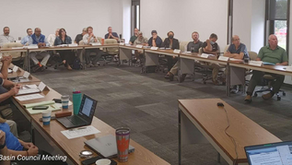How Much Money Is Needed to Deliver a Capital Project Program?
- JD Solomon
- Jun 27, 2022
- 2 min read

The answer is somewhere between 5 to 18 percent of constructed project costs. And it is more complicated than simply the percentages.
If the top end of this range sounds high to you, then I will bet you are not delivering your annual constructed value goals. You have underfunded your supporting roles. And in most cases where I find the delivery is off the rails, no one in leadership can tell me quickly how much is being spent on the capital program management functions.
A recent example is a new $100 million capital delivery program that I was asked to improve. This new program was on top of a program whose three-year rolling average of constructed value delivered was 25 percent of the goal. The project controls function was a shared function between the engineering and finance department, and no one could tell me who was exactly leading the effort.
A starting point of $1 million can be used for project controls of the new $100 million program based on 1 percent of the constructed value for that aspect. Over four years of delivery, the full-time equivalent for project controls costs around $500,000. Add in the software support and a risk manager, and there was easily the other $500,000.
Can a project controls person, risk manager, and supporting software serve more than a $100M capital program? Yes, in this case, because most of the projects were large. However, the base program lacked good procurement policies and was strained in terms of personnel, so more help was needed from the new program to bolster the existing (failing) program.
Start with the money to develop the capital program delivery framework. Capital delivery is a system that includes many inputs, processes, people, feedback loops, and outputs. There is certainly much more to being successful than the money. Yet, successful programs can usually quickly tell you how much (and where) they are spending the administration money.
JD Solomon Inc provides services at the nexus of facilities, infrastructure, and the environment. Contact us for more information about project development, project risk management assessments, and third-party reviews of capital program delivery.




留言